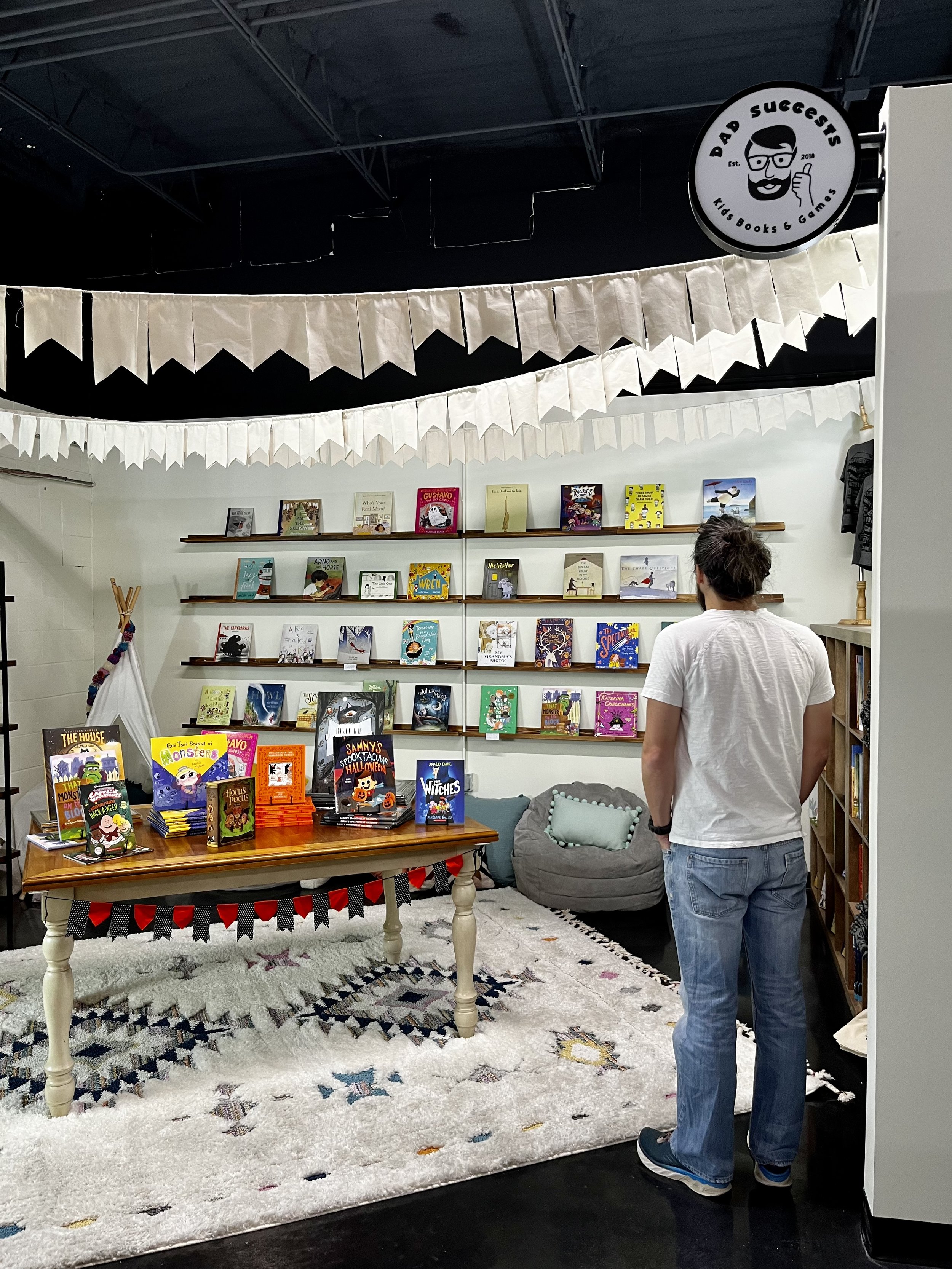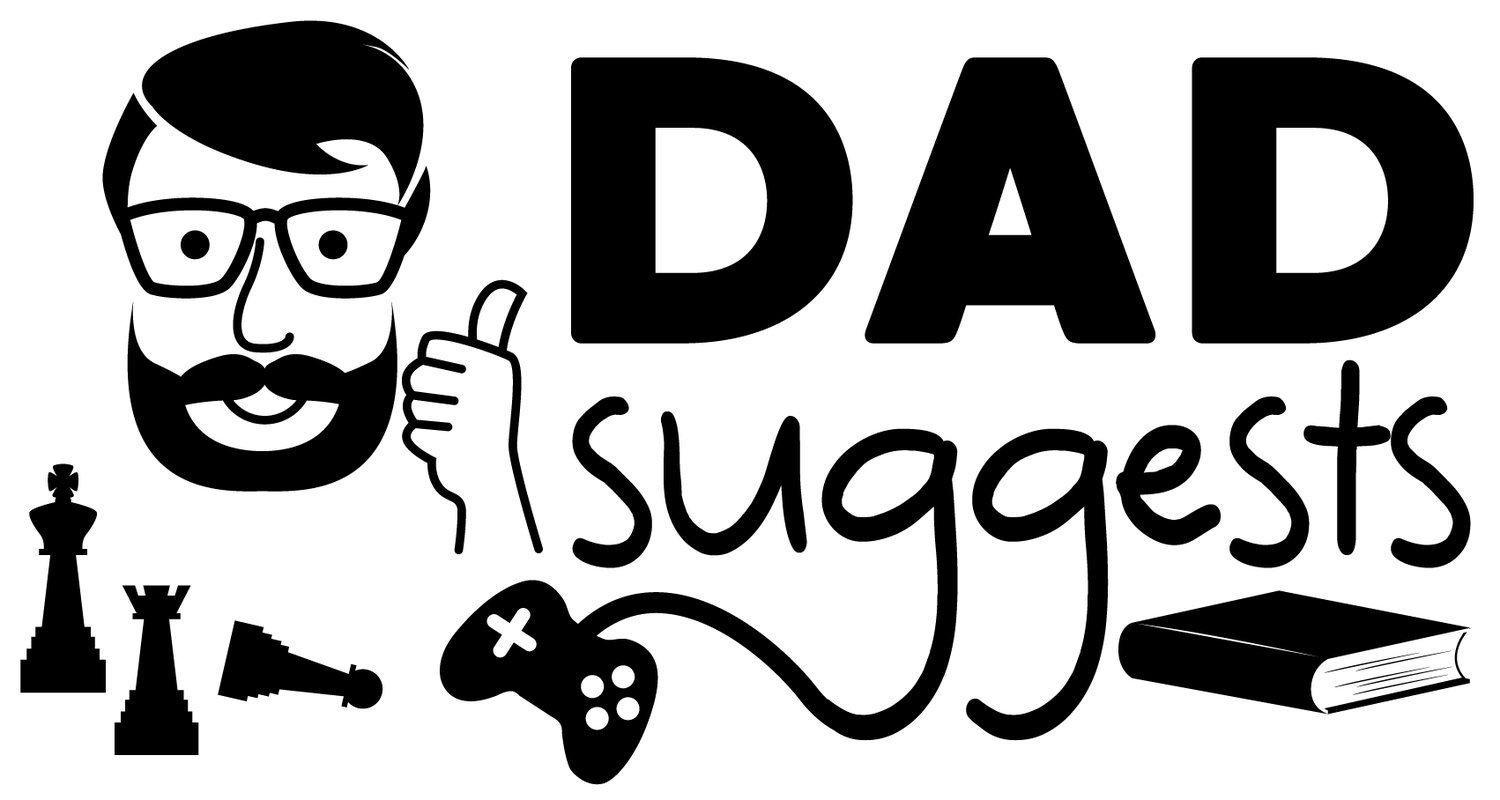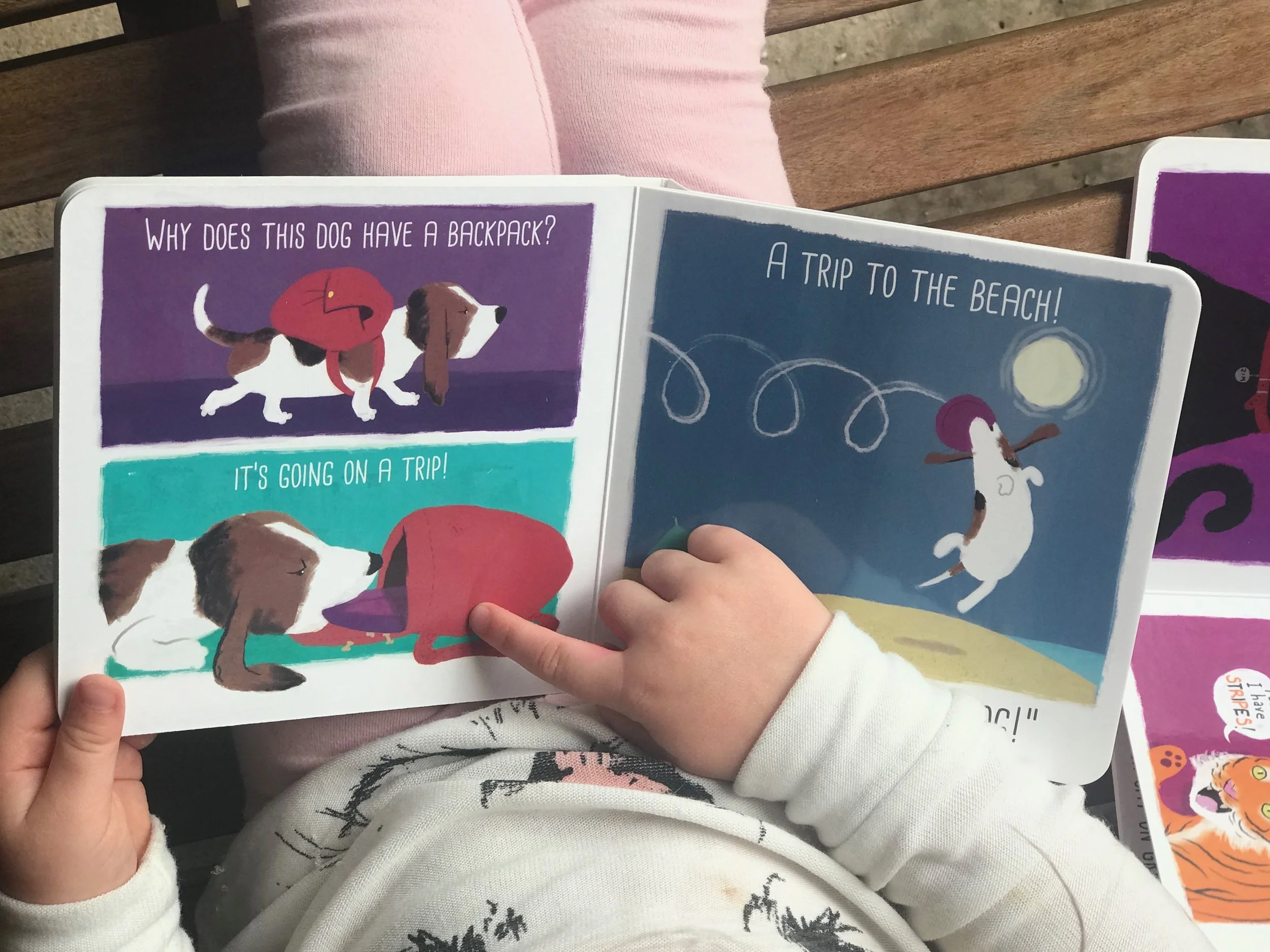How To Read To Your Kids: Dialogic Reading with Blue Manatee
Why do you read books aloud to your kids? Are you trying to build their knowledge and vocabulary and set them up for academic success? Are you trying to nurture their creativity and their imagination? Do you want to introduce them to the world and grow their social-emotional skills? Or maybe you just want your kids to grow up loving books because of how much joy they bring. I think it’s fair to say there’s a good chance you’re already aware of all of these benefits - but did you know there’s actually a certain style of reading that will amplify all of them?
Disclosure: Blue Manatee Press provided us with copies of the books mentioned in this article - Dogs! Cats! and Cows!. All thoughts and reflections are our own.
The reading strategy that I’m talking about is called dialogic reading - or having a back-and-forth dialogue with your kids about the text. It’s a strategy that’s been talked about for many years, and it’s been put into practice by teachers and librarians all over the world. But it hasn’t exactly found its way into every home yet. I’m aware of the concept, and I do my best to slow down and ask questions while I’m reading - but sometimes I still find myself flying through a book too fast to even enjoy the illustrations.
Think back to the last time you watched a teacher or a librarian read to a small group of kids. Did they ask the kids a lot of questions about what they see in the pictures? Did they ask them to predict what was going to happen next? Perhaps they even asked the kids how they thought the characters in the book were feeling. That’s dialogic reading. And the early champion of dialogic reading, Dr. Grover Whitehurst, says that students who are read to in this way end up substantially ahead of students who are read to in a traditional way.
Why is dialogic reading so much better than a traditional read aloud? Simply put, it creates a much more engaging experience for everybody involved. If you start early with your little ones, you’re encouraging a lifetime of thoughtful reflection and engagement with literature. Instead of simply being read to, children are invited to actively participate in the story. This can increase their vocabulary, improve their verbal skills, and certainly better engage their curiosity and their imagination.
The best part about dialogic reading is that you can start doing it today with absolutely any of the books in your home. My personal three favorite ways to do this are:
Ask your kids to predict what will happen next in the story.
Ask them how they think the characters are feeling - or how they would feel if they were in that situation.
Take time to really study the illustrations together and ask what kinds of things they notice.
And while you can read this way with any books that you own, we recently got our hands on some fantastic board books from Blue Manatee Press that were actually created with dialogic reading in mind. We’re big fans of this independent publisher, because their mission is to connect the goal of early literacy to health, imagination, diversity, and a strong family connection. How can you argue with a mission like that?
The board books I’m talking about - Dogs!, Cats!, and Cows! - are part of a series called the DR. Book series. The “DR.” stands for dialogic reading, but it’s also a play on the fact that they were written by Blue Manatee’s founder - pediatrician Dr. John Hutton.
Perhaps you’re wondering what it means to create a book with dialogic reading in mind - and how they’re different than any other books. Hutton did this by building the dialogues into the books themselves. Just by reading them, you are going to have a dialogue with your kids whether you want to or not. Hutton closely followed 2 important building blocks of dialogic reading - CROWD prompts and PEER sequences.
Blue Manatee Press has a wonderful blog post on dialogic reading that spells out exactly what those acronyms mean and how the DR. Books were inspired by them:
CROWD Prompts
Completion (“When dogs talk, they say _____.”)
Recall (“Remember the dog on the last page?”)
Open-Ended questions (“Share your thoughts on that.”)
Wh- Questions (“Where does this dog live?”)
Distancing (“Does this dog remind you of ____?”)
PEER Sequence
Prompt (“What color is this dog?”)
Evaluate (“That’s right, it’s yellow!”)
Expand (“It’s a yellow, furry dog.”)
Repeat (“Can you say ‘yellow, furry dog?'”)
We now have the first three books in the DR. Books series - Dogs!, Cats!, and Cows! - and we’re happy to hear there are more to come. Our daughter absolutely loves them. The adorable illustrations by Doug Cenko have a lot to do with how endearing these books are - and so too does the built-in dialogue.
It’s very clear to see how much our 3-year-old enjoys answering the questions and being a part of the story. She has some of her answers memorized at this point - and she gets a big smile and and a look of familiarity on her face when we flip through the books together. More so than any other books we own, these books make our toddler feel like she’s reading the books with us.
It kind of feels like Dogs!, Cats! and Cows! are actually training me on how to be a better reader as a dad. They make it impossible for me to get in a hurry and flip past pages without allowing time for processing. I’m forced to slow down and point at pictures and provide waiting time for the responses from my daughter. Since the benefits of dialogic reading are so numerous - I consider these little books from Blue Manatee Press to be a very valuable parenting tool. And, taking into consideration how much our little girl enjoys them, it must be working.
Have you read any of Blue Manatee’s DR. Books yet? Dogs!, Cats!, and Cows! are available on Amazon (affiliate links), or directly from Blue Manatee Press.
Do you like to have a dialogue with your kids while you’re reading? Can you tell a difference in their engagement when you ask questions? Let us know in the comments!











